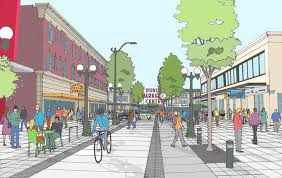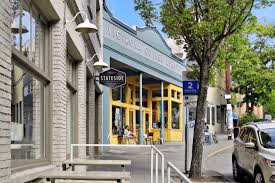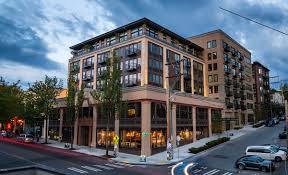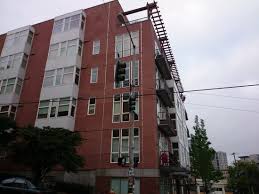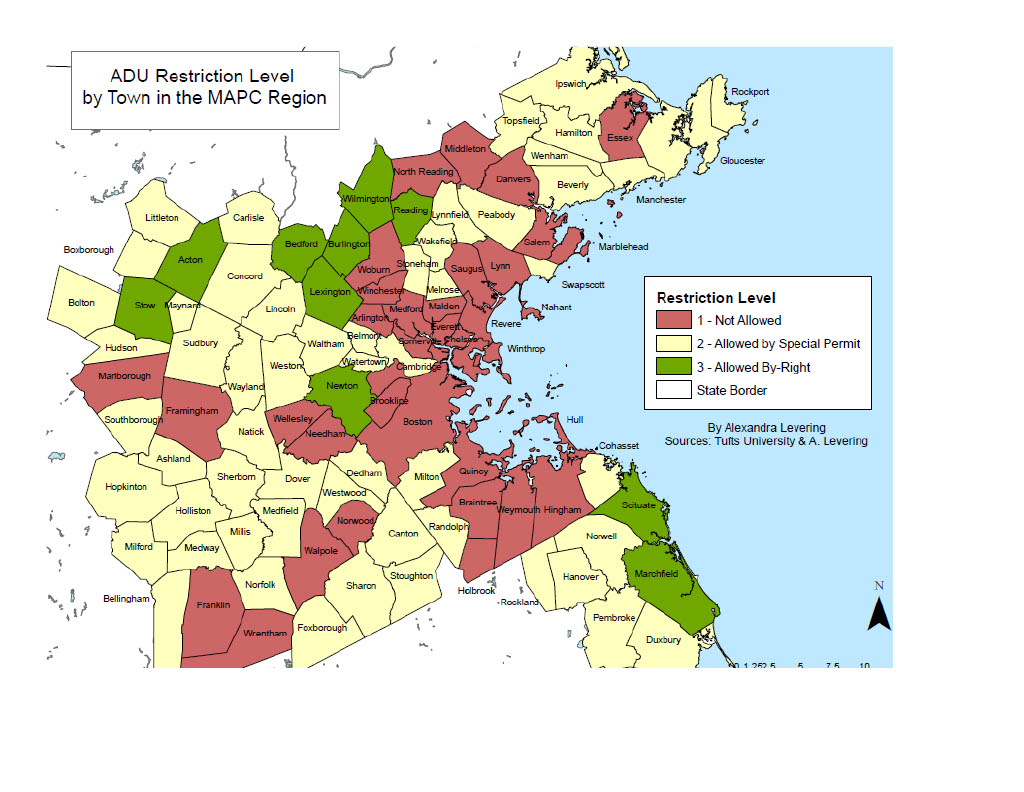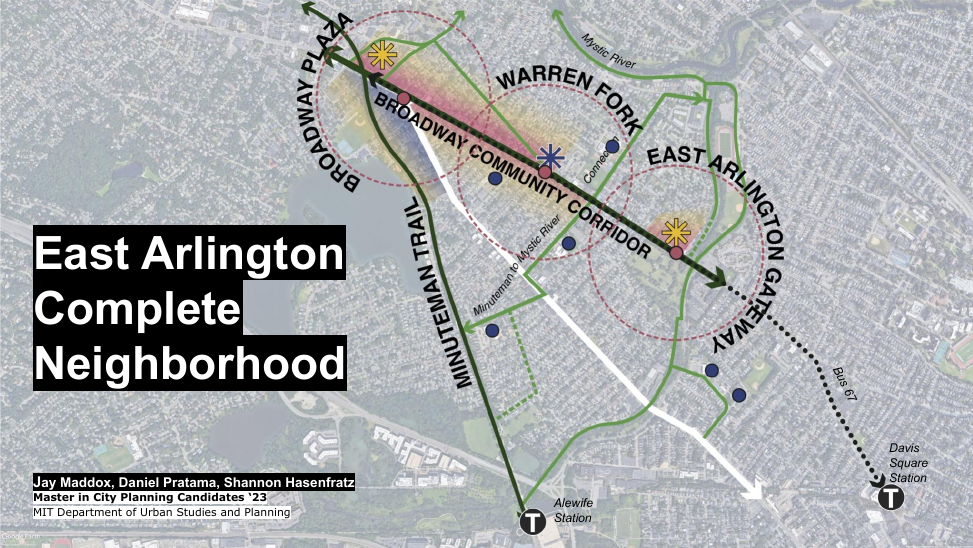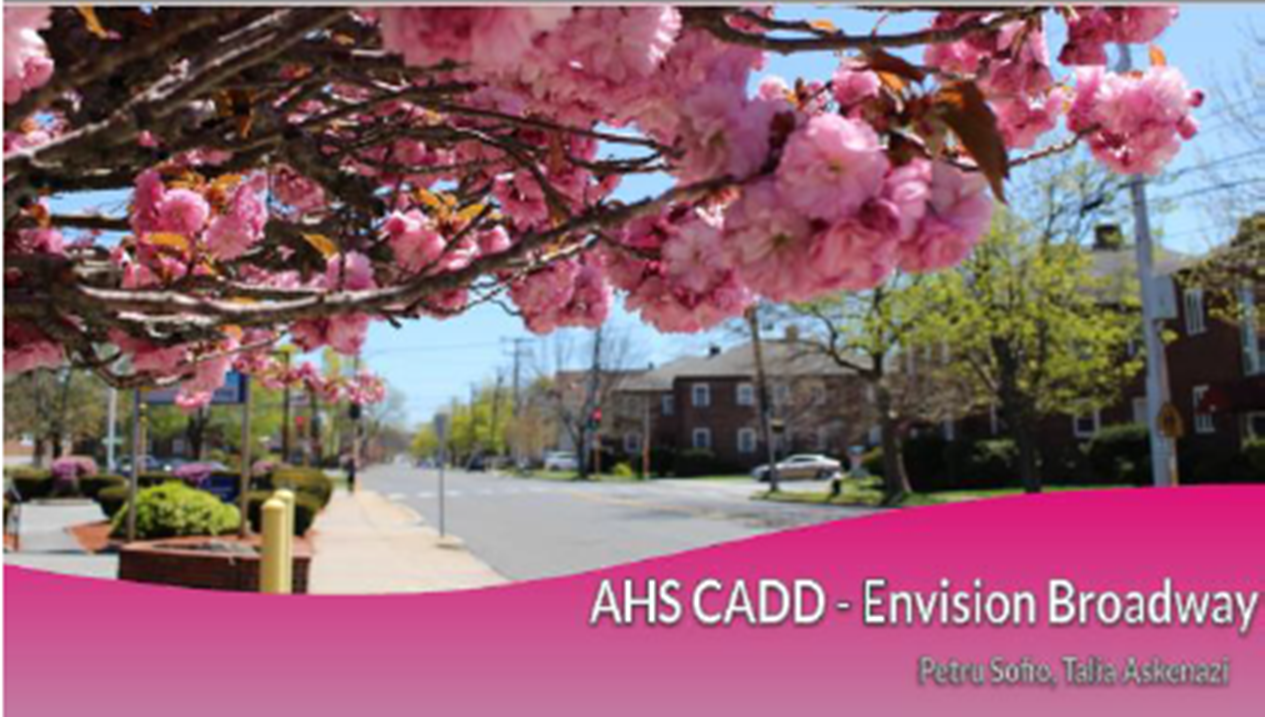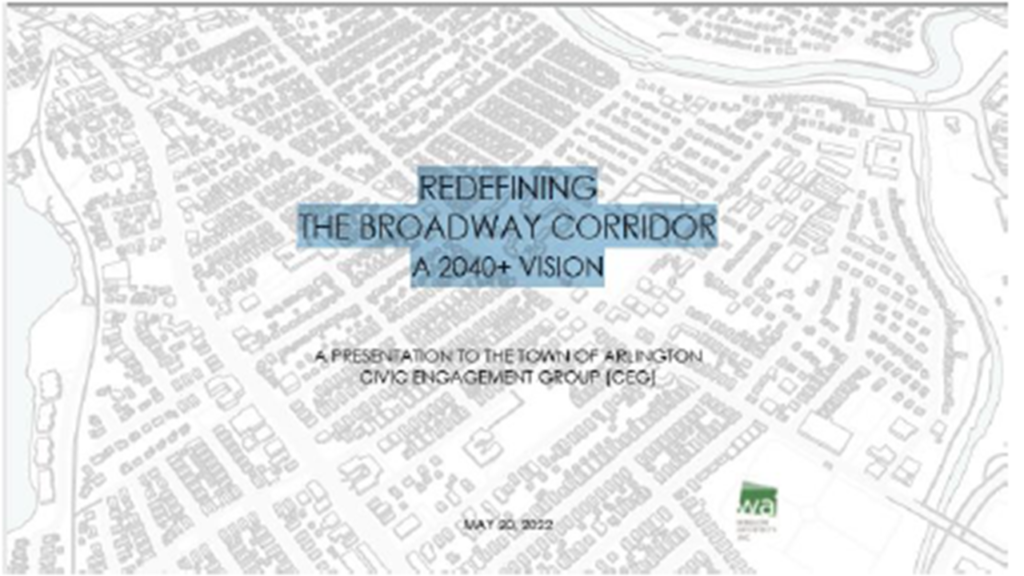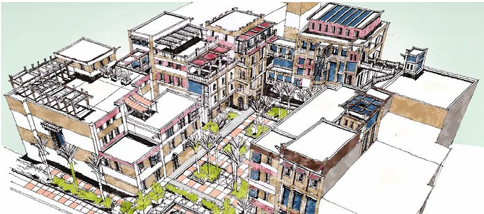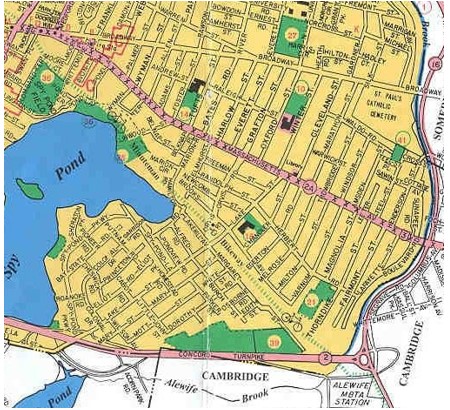by Anson Stewart
Last year, the New York Times published The Climate Impact of Your Neighborhood, Mapped. This interactive feature shows that across the country, carbon emissions per household tend to be lower in relatively dense, walkable, and transit accessible areas. Compared to nearby communities like Winchester, Lexington, and Belmont, the average household in Arlington is responsible for much lower carbon dioxide-equivalent (CO2e) emissions. Allowing more housing along Mass Ave and Broadway, as proposed by the town’s MBTA Communities Working Group, would enable more households to live in these lower-emissions neighborhoods and could be a meaningful step toward reducing driving and Massachusetts’ climate impact.
Zoning Artificially Limits Housing Supply
As noted in the NYT feature above, “For many people today, it is often easier and cheaper to find a home in a high-emissions community than a lower-emissions one… Many cities and local governments often artificially limit the amount of denser or transit-friendly housing available, particularly in wealthier neighborhoods, through zoning that favors single-family homes or requirements around minimum lot sizes and parking spaces.” Zoning restrictions from the 1970s severely constrain housing capacity along the corridors that help reduce climate impacts in Arlington. Those restrictions push families out to places where people drive more to meet their daily needs.
Driving (VMT) is the Largest Source of Massachusetts’ Climate Emissions
Cars are mind-bogglingly detrimental to our climate. According to the Massachusetts Clean Energy and Climate Plan for 2025 and 2030, “Transportation is the largest source of GHG emissions in the Commonwealth, responsible for 42% of statewide GHG emissions as of 2019… Emissions in the transportation sector have stagnated despite state and federal vehicle emissions standards that have gradually increased the fuel efficiency of vehicles. One major cause of increased emissions is the considerable increase in total statewide vehicle miles travelled (VMT) over the past 30 years.” Even as electric vehicles proliferate, the carbon intensity of our grid means driving will have a substantial climate impact, and reducing VMT must be a primary strategy.
The NYT analysis uses nationally available survey and expenditure data, so income and other effects may confound the estimates of transportation emissions. Massachusetts has a unique dataset that allows measuring driving emissions much more directly – the Massachusetts Vehicle Census (mentioned in the town Working Group report).
For each municipality, dividing the daily mileage driven (of cars registered there) by the population yields vehicle miles traveled (VMT) per capita, which varies widely in the Boston region. For example:
- Cambridge: 8 miles per person per day
- Somerville: 11
- Arlington: 14
- Boston: 14
- Belmont: 14
- Medford: 15
- Lexington: 16
- Winchester: 17
- Waltham: 17
- Woburn: 24
Thanks to Arlington’s walkable neighborhoods and transit access, our per capita VMT is lower than many nearby communities, and even on par with the City of Boston!
If Not Arlington, Then Where?
As a thought experiment, consider a climate-conscious family of four who wants to buy a condo in one of the communities above. If they can’t afford Cambridge, Somerville, or Arlington (where 2023 YTD median condo sale prices were $910k, $855k, and $810k respectively), they might consider Waltham or Woburn ($615k and $638k, respectively), or even Winchester or Lexington ($795k and $798k).
Lexington in particular might be appealing, especially as their Town Meeting recently adopted MBTA Communities zoning that allows much more multifamily housing than the minimum required (see the Lexington Cluster Housing Study Group materials in support of meaningful new housing supply). But even with that new capacity, the pace of development will be slow and most of the transportation “bones” of Lexington will be fixed. It is generally less transit accessible than Arlington, and all else equal, the family would likely end up driving more than if they lived in Arlington.
Assuming the average VMT per capita figures above, a family of four would end up driving an additional 2,920 miles per year living in Lexington versus Arlington. Assuming 30 mpg fuel efficiency and 8.9 kg CO2e per gallon of gas, the incremental emissions from this one family would be 865 kg of CO2e, equivalent to the annual carbon sequestered by six half-century-old red oak trees (according to Forest Service data here).
If this family moved to Woburn instead of Arlington, the incremental annual driving would be 14,600 miles. Associated emissions would be over 4.3 metric tons, equivalent to the annual carbon sequestered by 32 of those red oak trees.
Extrapolating These Emissions
How does this example of one family relate to the level of development Arlington might see from MBTA Communities zoning updates? The Working Group’s proposal had a nominal capacity of just over 7,000 housing units in an area that currently has about 2,100. The ARB recommendation to Town Meeting cuts the nominal capacity to around 3,400, for a possible net change of around 1,300 units theoretically allowed. Recent estimates (following the approach here) suggest that this capacity might result in 100 to 300 new housing units built in Arlington by 2033.
If new units enable 250 families like the one above to live in Arlington instead of Woburn, these back-of-the-envelope calculations suggest the avoided annual emissions from VMT reduction would be over 1,000 metric tons CO2e in the year 2033.
Of course these are rough estimates, and the actual climate impact will depend on wider development trends, grid decarbonization, MBTA service, and the details of the zoning that Town Meeting adopts later this month. Low parking requirements (as originally proposed by the Working Group) and robust transportation demand management could help strengthen the climate change mitigation potential of Arlington’s MBTA Communities zoning update. On the other hand, further reductions in Arlington’s multifamily housing capacity would exacerbate emissions. Those concerned about reducing our collective climate impact should take note.

